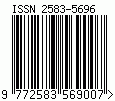Dynamic Human Action Recognition and Classification Using Computer Vision
Keywords:
Action Recognition, Video Classification, 2D Convolution Neural Network, Moving Average, Single Frame Video ClassifierAbstract
Action Recognition is one of the time series classification problem where we analyse the data from series of time steps for classifying and predicting the action being performed accurately. Video analysis shows significant improvement as it can predict the outcome of the future state by inferring the present state. This has been possible with the help of Computer Vision, Machine Learning, and Deep Learning fields. In video-based action recognition tasks, many actions can be identified and inferred based on the movements of the actions performed. In our paper, we use UCF50 dataset which consists of fifty categories of actions performed from YouTube. In our paper, we use the video classification model to solve action recognition by analysing each frame of the videos. We aim to create a 2D Convolutional Neural Network classifier, then implement a single frame video classifier along with moving average technique on the live videos, to classify and predict the action performed. Our proposed model has obtained an accuracy of 98.56%.
References
Popescu, A. C., Mocanu, I., & Cramariuc, B. (2020). Fusion mechanisms for human activity recognition using automated machine learning. IEEE Access, 8, 143996-144014.
Ajmal, M., Ahmad, F., Naseer, M., & Jamjoom, M. (2019). Recognizing human activities from video using weakly supervised contextual features. IEEE Access, 7, 98420-98435.
Lu, N., Wu, Y., Feng, L., & Song, J. (2018). Deep learning for fall detection: Three-dimensional CNN combined with LSTM on video kinematic data. IEEE journal of biomedical and health informatics, 23(1), 314-323.
Zerrouki, N., Harrou, F., Sun, Y., & Houacine, A. (2018). Vision-based human action classification using adaptive boosting algorithm. IEEE Sensors Journal, 18(12), 5115-5121.
Ahmed, S. T., Guptha, N. S., Lavanya, N. L., Basha, S. M., & Fathima, A. S. (2022). IMPROVING MEDICAL IMAGE PIXEL QUALITY USING MICQ UNSUPERVISED MACHINE LEARNING TECHNIQUE. Malaysian Journal of Computer Science, 53-64.
Tanberk, S., Kilimci, Z. H., Tükel, D. B., Uysal, M., & Akyokuş, S. (2020). A hybrid deep model using deep learning and dense optical flow approaches for human activity recognition. IEEE Access, 8, 19799-19809.
Ayhan, B., Kwan, C., Budavari, B., Larkin, J., Gribben, D., & Li, B. (2020). Video activity recognition with varying rhythms. IEEE Access, 8, 191997-192008.
Zhu, H., Vial, R., Lu, S., Peng, X., Fu, H., Tian, Y., & Cao, X. (2018). YoTube: Searching action proposal via recurrent and static regression networks. IEEE Transactions on Image Processing, 27(6), 2609-2622.
Tu, Z., Li, H., Zhang, D., Dauwels, J., Li, B., & Yuan, J. (2019). Action-stage emphasized spatiotemporal VLAD for video action recognition. IEEE Transactions on Image Processing, 28(6), 2799-2812.
Rohan, A., Rabah, M., Hosny, T., & Kim, S. H. (2020). Human pose estimation-based real-time gait analysis using convolutional neural network. IEEE Access, 8, 191542-191550.
Yang, Z., Li, Y., Yang, J., & Luo, J. (2018). Action recognition with spatio–temporal visual attention on skeleton image sequences. IEEE Transactions on Circuits and Systems for Video Technology, 29(8), 2405-2415.
Guptha, N. S., & Patil, K. K. (2017). Earth mover's distance-based CBIR using adaptive regularised Kernel fuzzy C-means method of liver cirrhosis histopathological segmentation. International Journal of Signal and Imaging Systems Engineering, 10(1-2), 39-46.
Siddiqi, M. H., Alruwaili, M., & Ali, A. (2019). A novel feature selection method for video-based human activity recognition systems. IEEE Access, 7, 119593-119602.
Xu, W., Yu, J., Miao, Z., Wan, L., & Ji, Q. (2019). Spatio-temporal deep Q-networks for human activity localization. IEEE Transactions on Circuits and Systems for Video Technology, 30(9), 2984-2999.
Dhiman, C., & Vishwakarma, D. K. (2019). A Robust Framework for Abnormal Human Action Recognition Using $boldsymbol {mathcal {R}} $-Transform and Zernike Moments in Depth Videos. IEEE Sensors Journal, 19(13), 5195-5203.
Ye, J., Qi, G. J., Zhuang, N., Hu, H., & Hua, K. A. (2018). Learning compact features for human activity recognition via probabilistic first-take-all. IEEE transactions on pattern analysis and machine intelligence, 42(1), 126-139.
Nawaratne, R., Alahakoon, D., De Silva, D., Kumara, H., & Yu, X. (2019). Hierarchical two-stream growing self-organizing maps with transience for human activity recognition. IEEE Transactions on Industrial Informatics, 16(12), 7756-7764.
Geeta, C. M., Raghavendra, S., Buyya, R., Venugopal, K. R., Iyenga, S. S., & Patnaik, L. M. (2018). Data auditing and security in cloud computing: issues, challenges and future directions. International Journal of Computer (IJC), 28(1), 8-57.
Mara, G. C., Rathod, U., RG, S. R., Buyya, R., Iyengar, S. S., & Patnaik, L. M. (2020). CRUPA: collusion resistant user revocable public auditing of shared data in cloud. Journal of Cloud Computing, 9, 1-18.
Sreedhar Kumar, S., Ahmed, S. T., Mercy Flora, P., Hemanth, L. S., Aishwarya, J., GopalNaik, R., & Fathima, A. (2021, January). An Improved Approach of Unstructured Text Document Classification Using Predetermined Text Model and Probability Technique. In ICASISET 2020: Proceedings of the First International Conference on Advanced Scientific Innovation in Science, Engineering and Technology, ICASISET 2020, 16-17 May 2020, Chennai, India (p. 378). European Alliance for Innovation.
Ahmed, S. T., & Basha, S. M. (2022). Information and Communication Theory-Source Coding Techniques-Part II. MileStone Research Publications.
Guptha, N. S., Balamurugan, V., Megharaj, G., Sattar, K. N. A., & Rose, J. D. (2022). Cross lingual handwritten character recognition using long short term memory network with aid of elephant herding optimization algorithm. Pattern Recognition Letters, 159, 16-22.
Downloads
Published
How to Cite
Issue
Section
License
Copyright (c) 2023 Geeta C Mara, Syed Thouheed Ahmed, Vinaya R M

This work is licensed under a Creative Commons Attribution-NonCommercial-NoDerivatives 4.0 International License.



